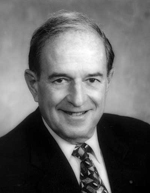David Atlas

(1924- )
ATLAS, DAVID (1924– ), U.S. meteorologist. Born in New York, Atlas joined the Air Force Cambridge Research Laboratory in 1948, and became chief of the weather radar branch. In 1965 he accepted a professorship at the University of Chicago's Department of Geophysical Sciences. Atlas was active in the field of meteorology for six decades. He is best known for his research in the field of radar technology. Other dimensions to Atlas' career are those of inventor, educator at the University of Chicago, laboratory director at the Air Force Cambridge Research Laboratory, division director at the National Center for Atmospheric Research, and laboratory director at the Goddard Laboratory for Atmospheric Science. He served the ams in many capacities, including the position of president. In recognition of his accomplishments, Atlas received the ams Meisinger, Charney, and Rossby awards. He is also a member of the National Academy of Engineering.
Atlas has had a profound influence on meteorology in general through his research and through the people with whom he worked and whom he touched as a mentor. Atlas' contributions to aviation safety include a device for detecting severe storms, which was adopted by all major commercial airlines, based upon the use of the Doppler effect in radar systems to comprehend the structure of the tornado as well as devices for the automatic plotting of wind velocity at set altitudes within storms. He made further major contributions to radar meteorology by inventing a method for the measurement of atmospheric turbulence and also by developing means of detecting the sea breeze and the echoes of lightning channels descending from the tops of thunderstorms. His recognition of the exceptionally wide radar reflections received from hailstones enabled pilots to detect hail conditions in advance and to avoid them. The safety of modern air travel is largely due to these contributions to radar research, which have also greatly helped the science of agrometeorology.
BIBLIOGRAPHY:
The Newton Graphic (August 12, 1966).
[Dov Ashbel /
Bracha Rager (2nd ed.)]
Source: Encyclopaedia
Judaica. © 2008 The Gale Group.
All Rights Reserved.
Wikimedia, By NASA (NASA) [Public domain], via Wikimedia Commons
|